Specialty of Chandoli National Park, Sangli Maharashtra
Chandoli National Park is located at the junction of 4 districts of Maharashtra state, Sangli, Satara, Kolhapur, and Ratnagiri. If you want to do a jungle safari in this national park then you will have to come to the Mandur village of Shirala taluk of Sangli district. From here you will get to the entry gate of Chandoli National Park. This place is at a distance of 98 KM from District Headquarters Sangli and 78 KM from Kolhapur City.
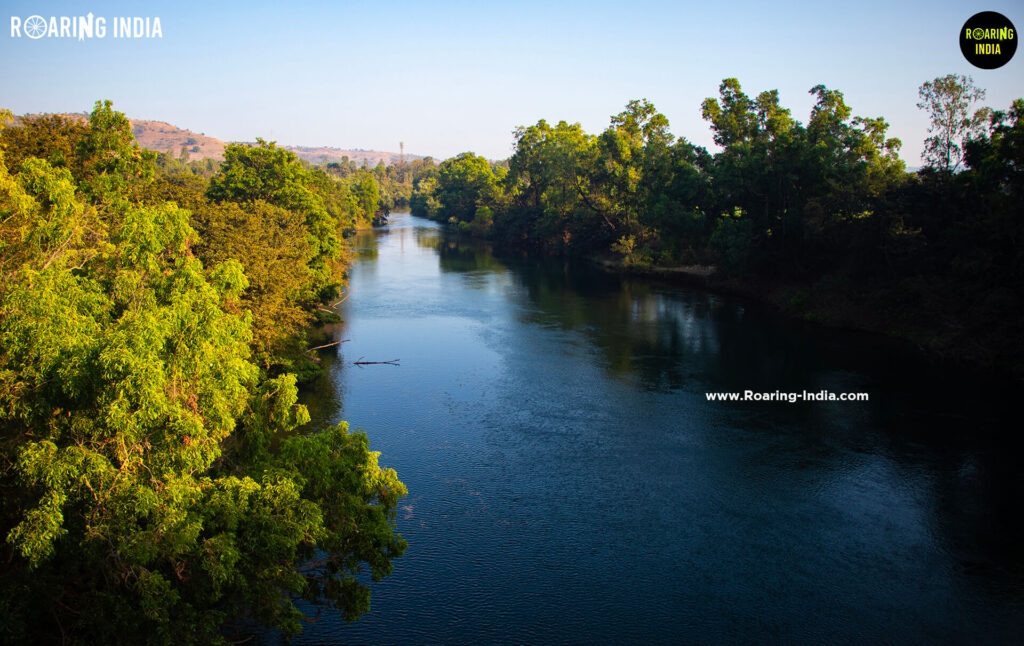
Chandoli National Park is one of the major parts of the Sahyadri Tiger Reserve. Please take a look at the map below carefully. The total green dense forest area is the Sahyadri Tiger Reserve. In this, “Koyna Wildlife Sanctuary” is situated in the upper part i.e. in the Northern Region, and “Chandoli National Park” is located in the lower part i.e. in the Southern Region. Geographically, “Chandoli National Park” is located between the Koyna Wildlife Sanctuary and the Radhanagari Wildlife Sanctuary.
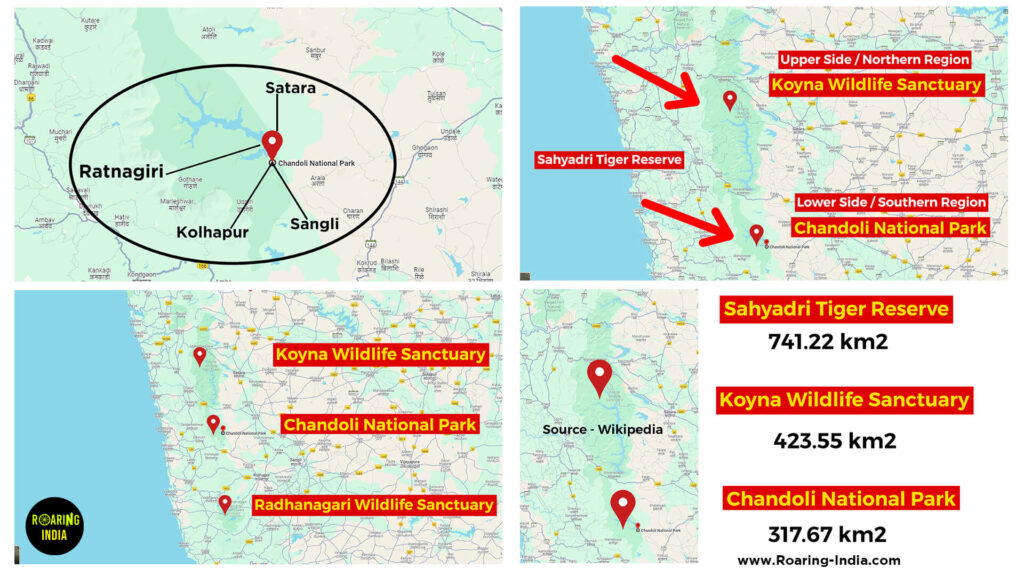
The total area of Sahyadri Tiger Reserve is 741.22 Square KM, the total area of Chandoli National Park is 317.67 Square KM and the total area of Koyna Wildlife Sanctuary is 423.55 Square KM. Chandoli National Park has also received the recognition status of UNESCO World Heritage Site.
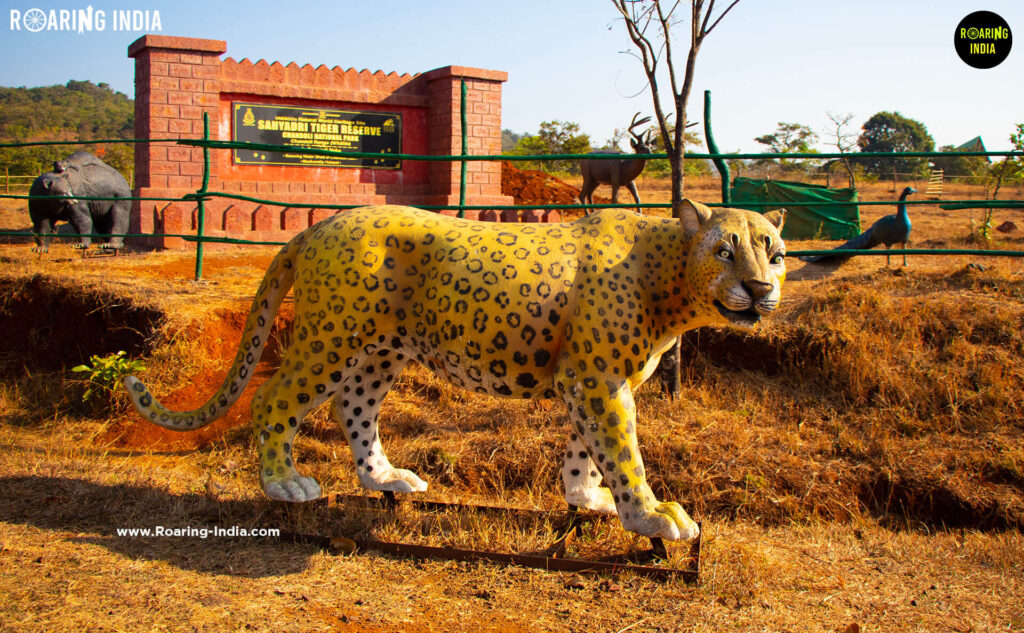
The wide dense forest of Chandoli was declared as Chandoli Wildlife Sanctuary in 1985. It was later given the status of Chandoli National Park in 2004 and became a core part of the Sahyadri Tiger Reserve in 2010. Chandoli Dam is also located in Chandoli National Park.
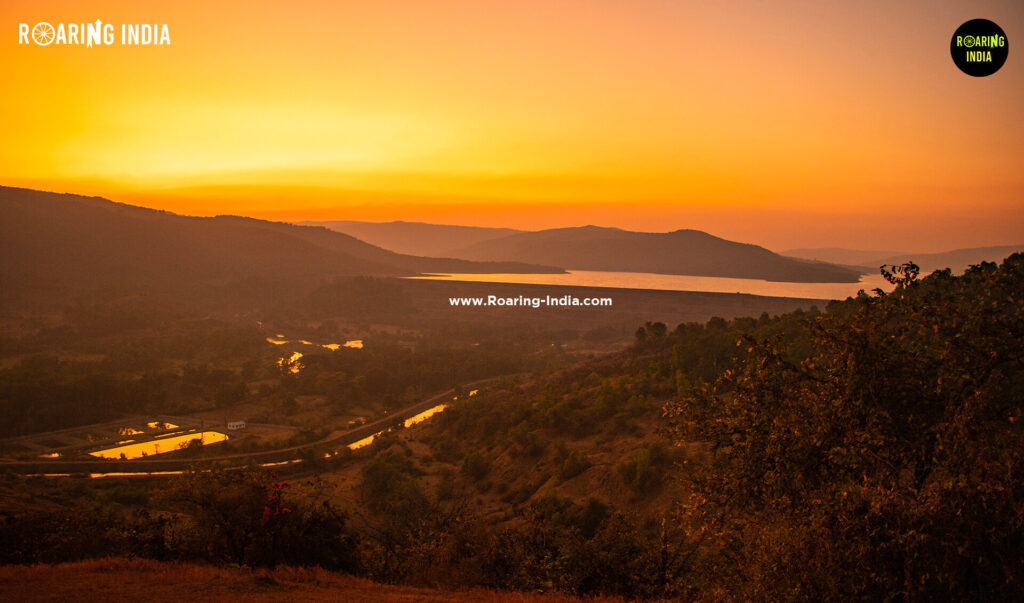
There is also a huge historical connection with the Chandoli National Park. Prachitgad and Bhairavgad, the 17th-century forts of the Maratha Empire, are located in the area of today’s Chandoli National Park and Sahyadri Tiger Reserve. During the reign of Chhatrapati Shivaji Maharaj, most of the place here was used as an open jail to keep prisoners of war. Chhatrapati Sambhaji Maharaj used Prachitgad Fort as an surveillance fort.
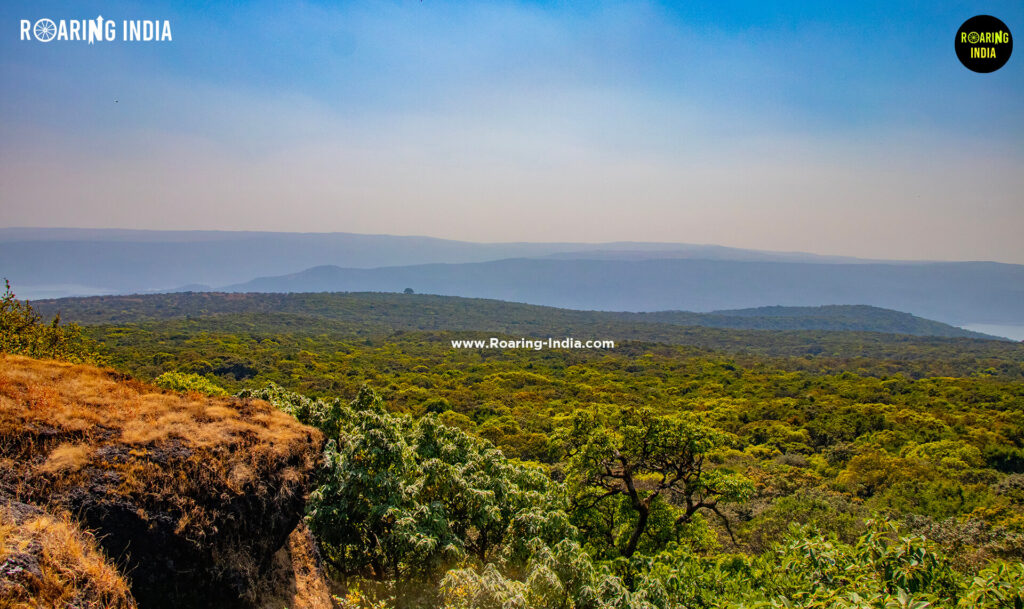
Jungle Safari Timings and Fees of The Chandoli National Park
Chandoli National Park is closed on every Thursday. In the rainy season also it is closed for tourist visits (From June to September). It is open to tourist visits from morning 6 AM to Evening 4 PM on all days except Thursday. After 3 PM no tourists are allowed to go for jungle safari and no entry tickets will be provided. You will get entry tickets at the main entrance gate of Chandoli National Park. For entry fee details please refer to the below table.
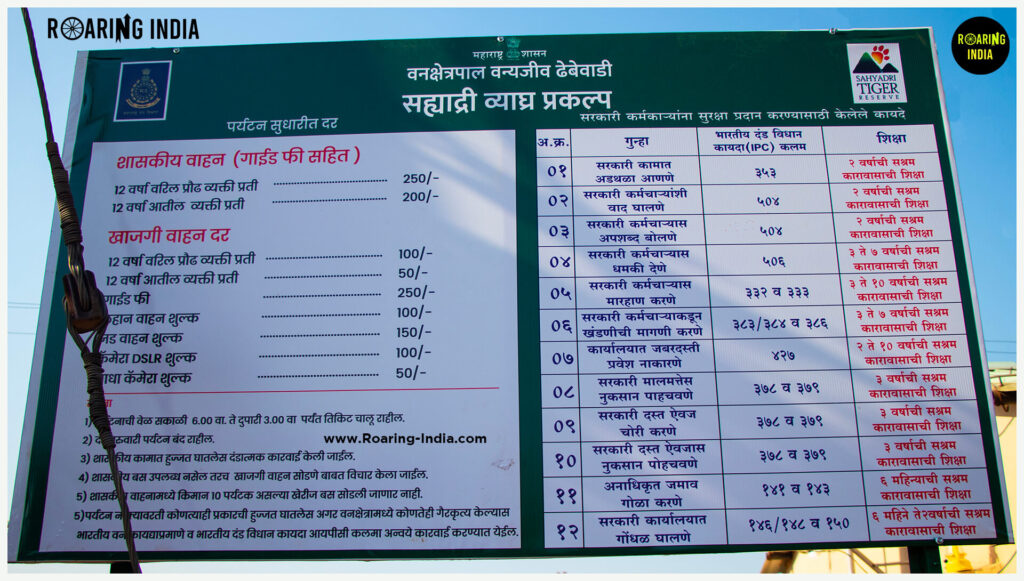
- Visiting Days – Open for all days except Every Thursday
- Visiting Hours – Morning 6 AM to Evening 4 PM (No Entry after 3 PM)
- Best Time to Visit – October to February Month (6 PM Safari Slot is best, More chances of sighting animals)
Government Vehicle Safari Charges (With Guide Fees)
- For Minors ( < 12 Years Old) – 200 RS /-
- For Adults ( > 12 Years Old) – 250 RS /-
Private Vehicle Jungle Safari Charges
- For Minors ( < 12 Years Old) – 50 RS /-
- For Adults ( > 12 Years Old) – 100 RS /-
- Guide Fees for Jungle Safari – 250 RS /-
- Entry Fees for LMV (Cars/Jeeps) – RS 100 /-
- Entry Fees for HMV (Bus/Mini Bus) – RS 150 /-
- DSLR Camera Fees – 100 RS /-
- Small Camera Fees – 50 RS /-
Special Note – Chandoli National Park will be closed for tourist visits during the rainy season (From June to September Month)
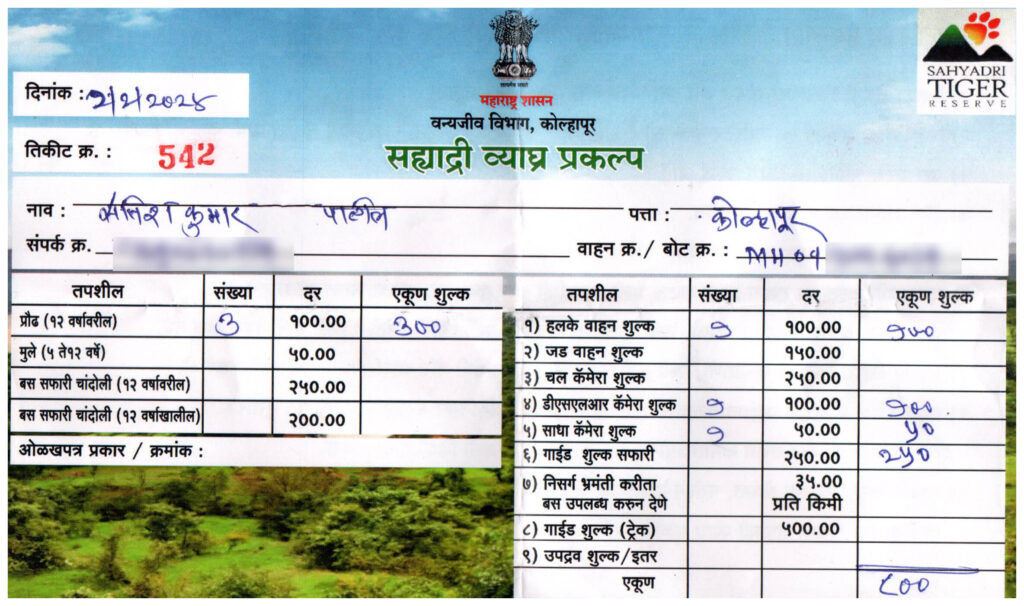
Wildlife Found in the Chandoli National Park, Maharashtra
Various types of birds, mammals, reptiles, & carnivorous animals are found in the Chandoli National Park. Ex – Tigers, Leopards, Leopard Cats, Gaurs, Panthers, Sloth, Bears, Barking Deer, Sambar Deer, Blackbucks. Chandoli forest is home to a variety of trees, grasses, medicinal plants, and herbs. Due to the lack of availability of food and water, more animals prefer to stay in the middle of the Chandoli forest. A smaller number of animals come to the edge of the forest areas. So we can’t see more animals during the jungle safari. Sighting animals in any jungle safari is a bit of luck. Otherwise, it is just a beautiful forest nature ride.
Chandoli National Park Jungle Safari Places
1) “I Love Chandoli” Welcome Board: You will find this “I Love Chandoli” welcome board at the entrance of the Mandur village. There is an office of “Sahyadri Tiger Reserve” next to it. Here you will get complete information about Chandoli National Park. This is not a part of Jungle Safari. But if you are curious to know about Chandoli you can visit here.
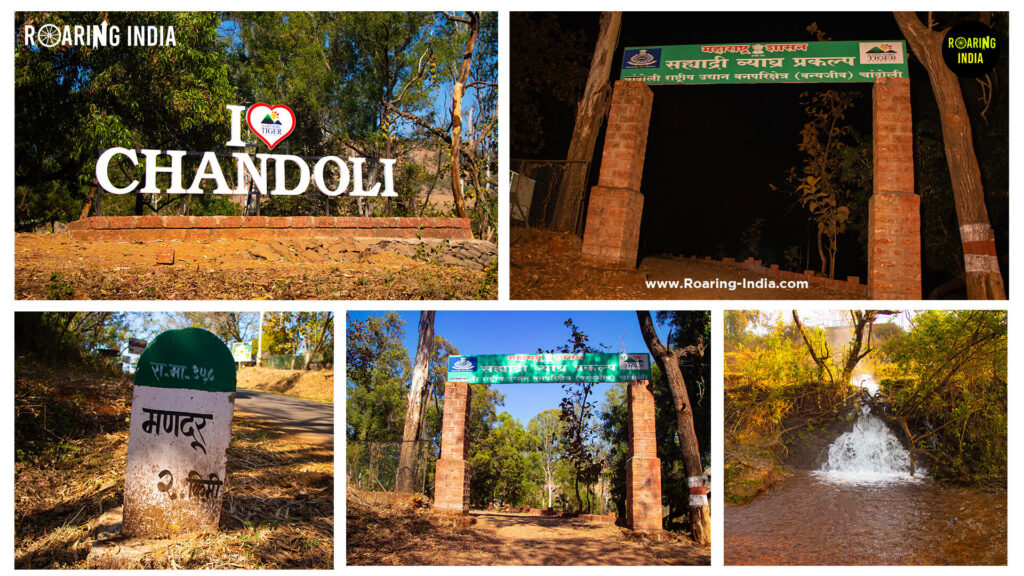
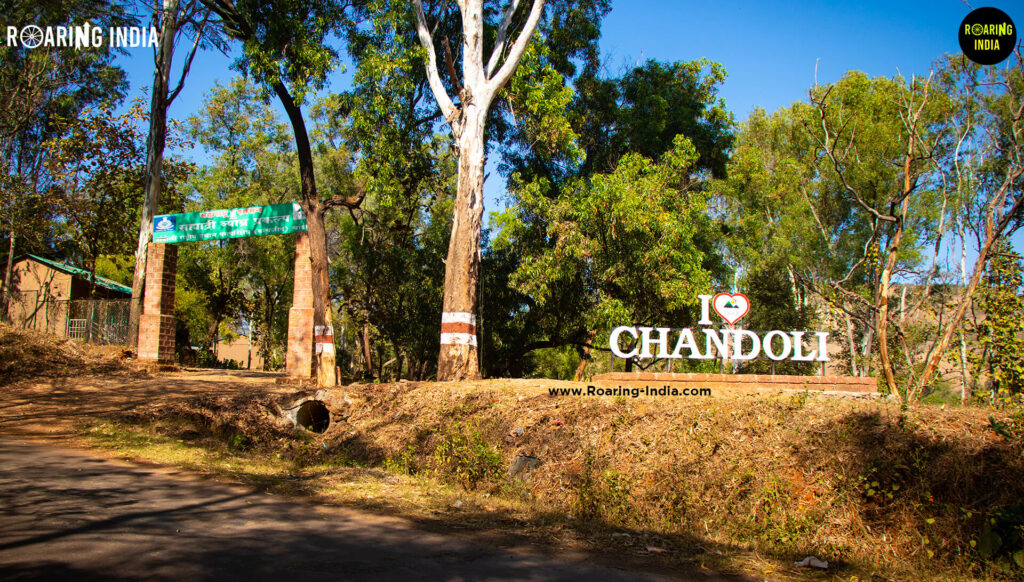
2) Warana River Bridge: Warana River Bridge is a beautiful place in the Chandoli forest. Please don’t miss this place. This bridge is the divider of the Sangli and Kolhapur districts. On one side of this bridge is Sangli district and on the other side is Kolhapur district. The big wall of Chandoli Dam is visible from this Warana River Bridge. Chandoli Dam is also called Warana Dam or Vasant Sagar. This Chandoli Dam has been built against the Warana River on the exact border of the Sangli and Kolhapur districts. The Warana River originates near Prachitgad in the Patharpunj Plateau of Satara district. And flowing through the dense forest of Chandoli, it reaches Chandoli Dam. Warana River flows out of Chandoli Dam and meets Krishna River near Haripur near Sangli City. Warana River is the lifeline for irrigation of the Sangli and Kolhapur districts.
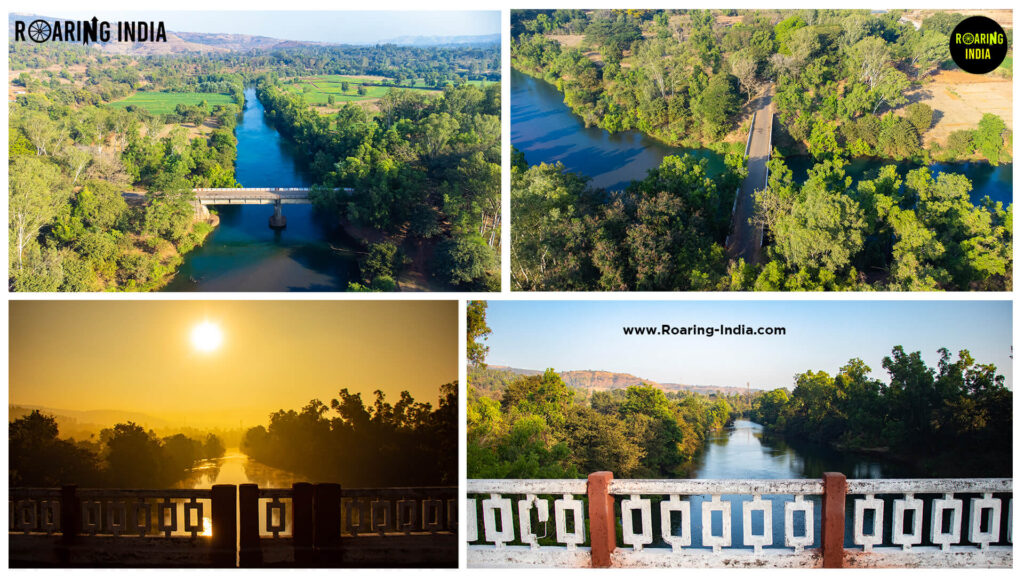
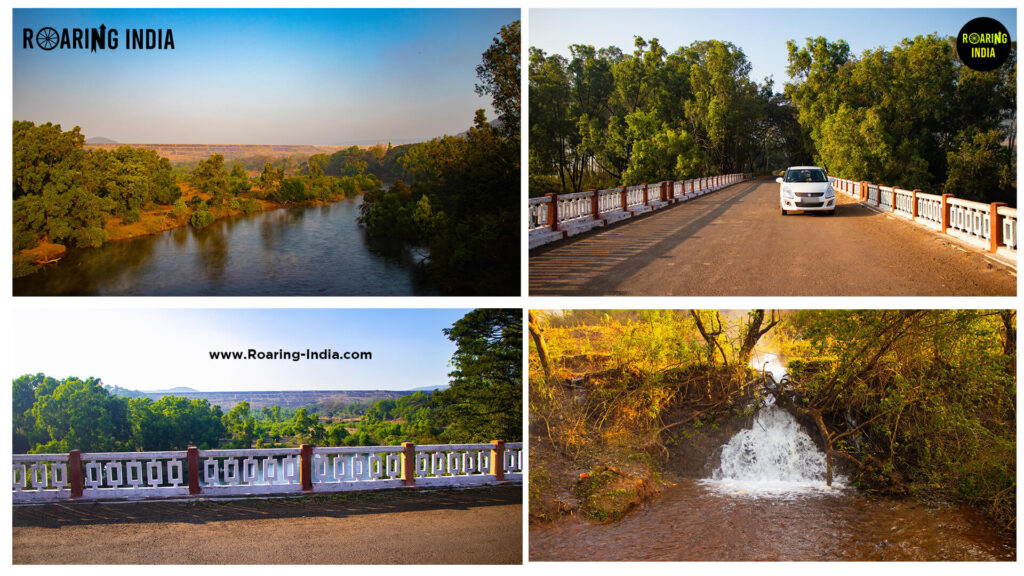
3) Chandoli Dam View Point: When you head towards the Main Entry Gate of Chandoli National Park, after seeing the Warana River Bridge, midway you will see the View Point of Chandoli Dam. From this viewpoint, you can enjoy a beautiful view of Chandoli Dam. Chandoli Dam is the second largest dam in the Western Ghats after Koyna Dam. The total water-storing capacity of this dam is 34.40 TMC. This is an Earthen Dam. It is built using soil, mud, and rocks.
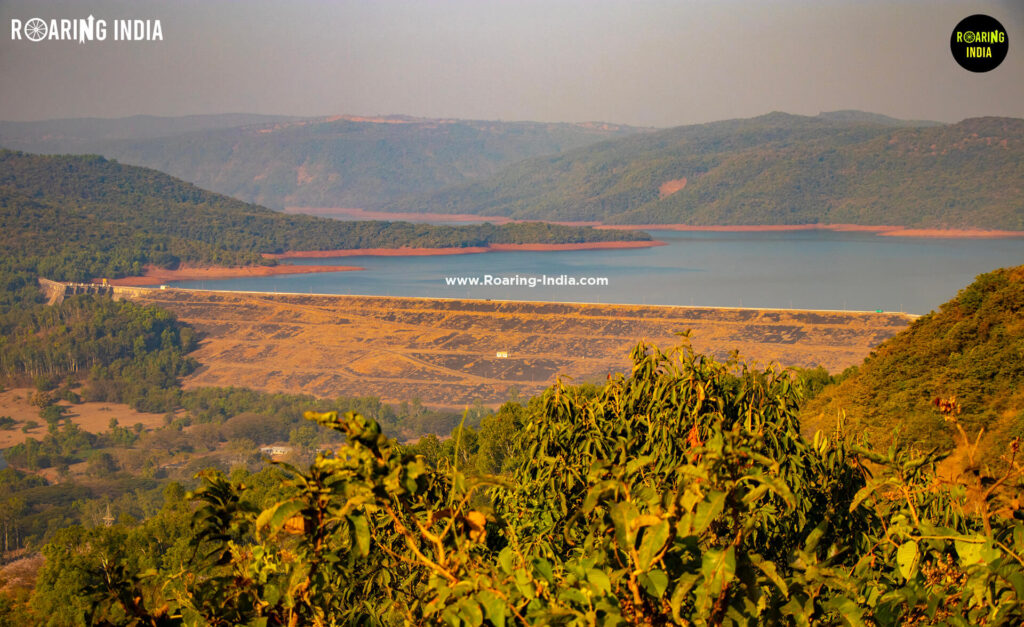
4) Main Entry Gate of Chandoli National Park: This is the main entry gate to Chandoli National Park. If you want to do a jungle safari in Chandoli National Park, then you will have to come to this entry gate only. Take the ticket from this counter and start your jungle safari in the huge forest of Chandoli. This main entry gate has realistic statues of wild animals present in Chandoli National Park. There is no guarantee that you will see any animal in the safari ahead or not. So take a look at them carefully. From here your real jungle journey starts. This is a total safari of 20 KM. 10 KM going and 10 KM coming.
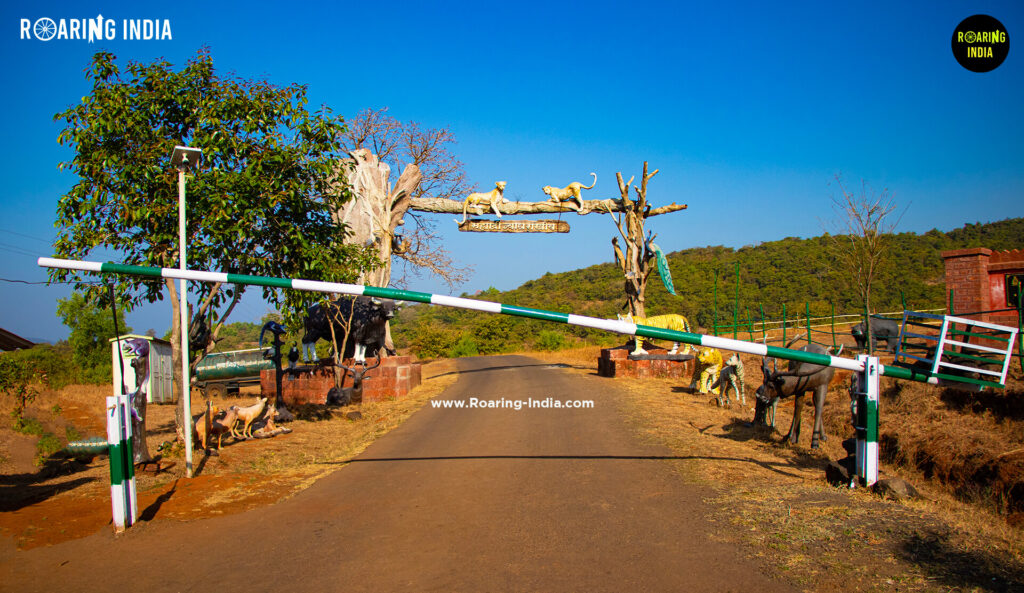
5) Borderline of Sangli and Satara Districts: While moving ahead in the safari, midway you will find some heap of stones. These are the borderline between the Sangli and Kolhapur districts. On this side is all the area of Sangli district and on the other side is all the area of Satara district.
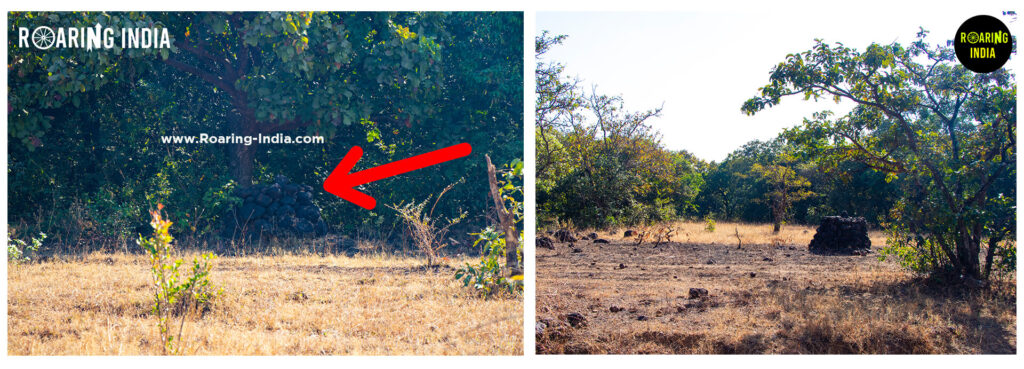
6) Sahyadri Tiger Reserve Gate: This is the 1st gate of the Chandoli National Park jungle safari. From here onwards you will enjoy the real jungle safari. This is a very big dense forest journey.
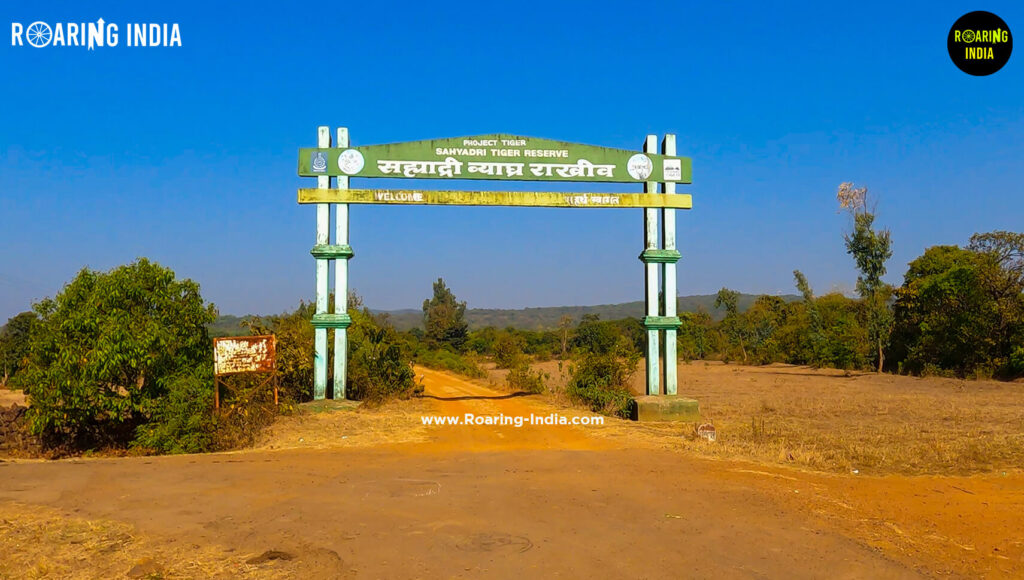
6) Nandoli Camp: Nandoli Camp is the Ticket Verification Counter and 2nd Gate of Chandoli National Park. Your tickets are verified here and your entry and exit will be recorded.

7) Artificial Water Pond: After going a little further from the Nandoli camp, you will find one small artificial water pond which is made to supply water for birds and animals. Drive here slowly. Because there are more chances of sighting animals and birds.

8) Camera Trap: One camera trap has been installed in Chandoli National Park to count the tigers. You will find this in your jungle safari route. If there is movement of any animal or human being in front of it, it automatically clicks the photo. It is said that in 2018, a tiger was seen in a camera trap. That is the only evidence that there are tigers in this forest. According to our knowledge, no one has seen any tigers till now here.
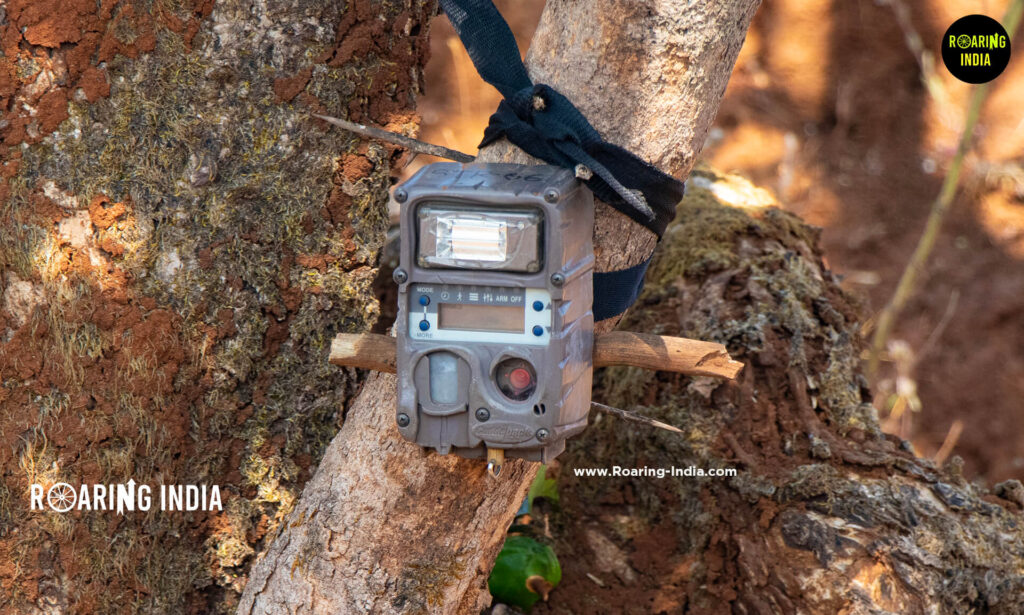
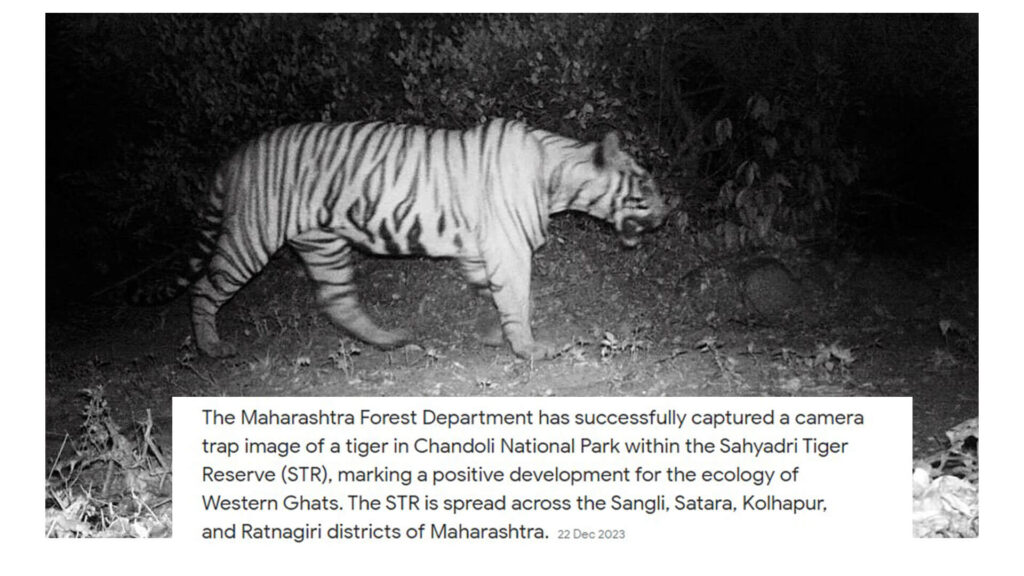
9) Janicha Amba: This big mango tree is more than 100 years old. This is the Direction Locator of Chandoli National Park. If you get lost in Chandoli forest then with the help of this tree you can guess where you are and find the way out of the forest. There was a brave woman named Jani who was able to fight with the bear alone and save herself and others too. Because of that courageous woman, this big mango tree got the name Janicha Amba.
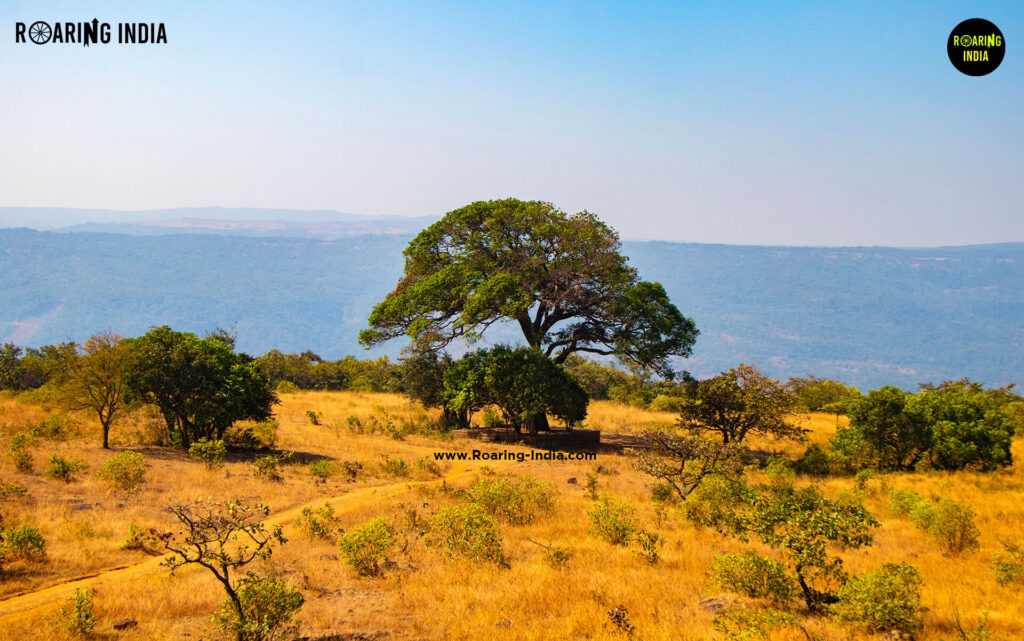
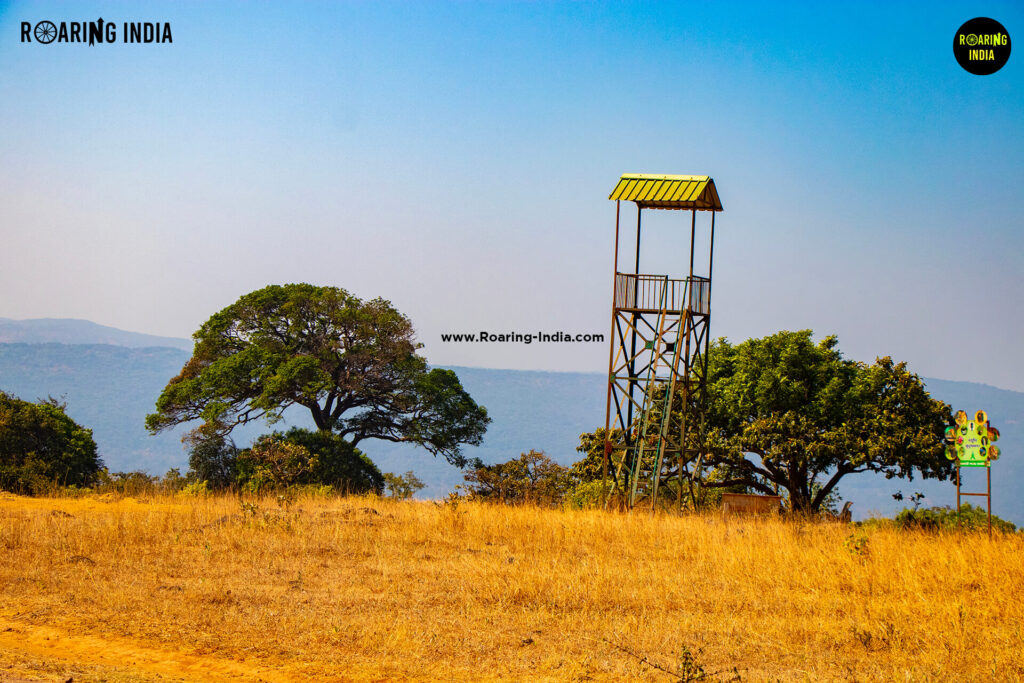
10) Watch Tower: There is a watch tower near the Janicha Amba. From this watch tower, you can see the backwaters of Chandoli Dam and also get an idea of the dense forest of Chandoli.

11) Laphan Ghar (Hide Room): This is the most interesting place in Chandoli National Park. To reach this place you have to walk in the forest path about 1 KM. In some places, you will feel the pin-drop silence, and in some places, you will hear the sounds of different birds and animals. After walking further, a trace of flowing water and a wooden pool will be seen. There you see less light. Because now you are in the middle of the forest. You will see more number butterflies and plants there. This is a completely different world. It gives you a thrilling experience and a cool memory. After walking in such a thrilling way you will reach your destination Laphan Ghar.
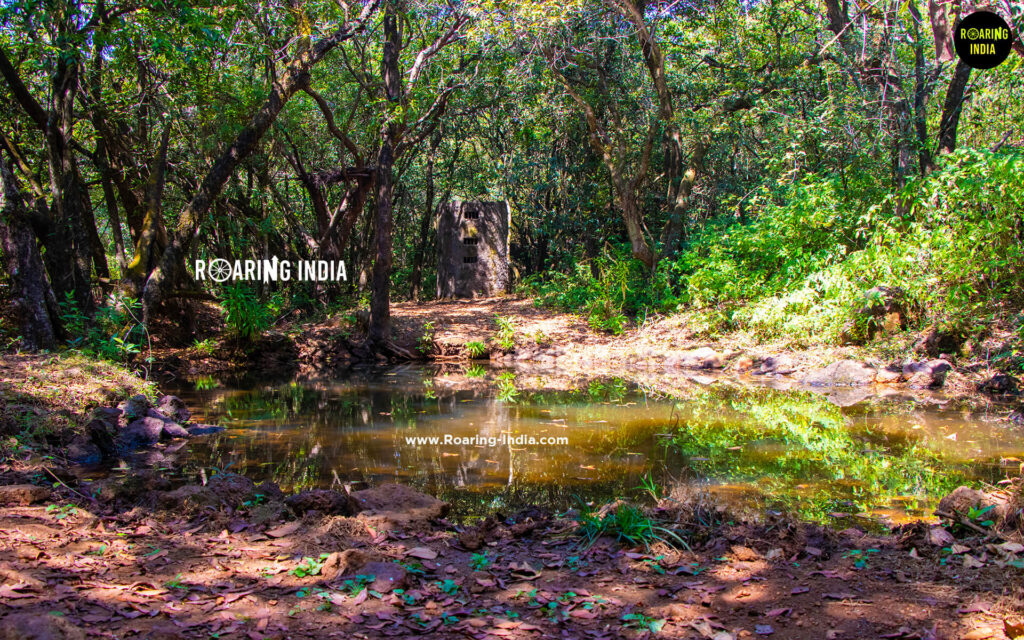
Laphan Ghar is a Hide Room built in the middle of Chandoli National Park forest. There is a natural water resource next to it. There is no water source anywhere within three to four kilometers around here. That’s why many animals and birds come here to drink water. A safe Hide Room has been made here just to see them without disturbing them. Sitting inside it, you can see the birds and animals coming here to drink water. You can do wildlife photography. During the Animal Census, Forest Officers sit in this Hide Room and count the animals.
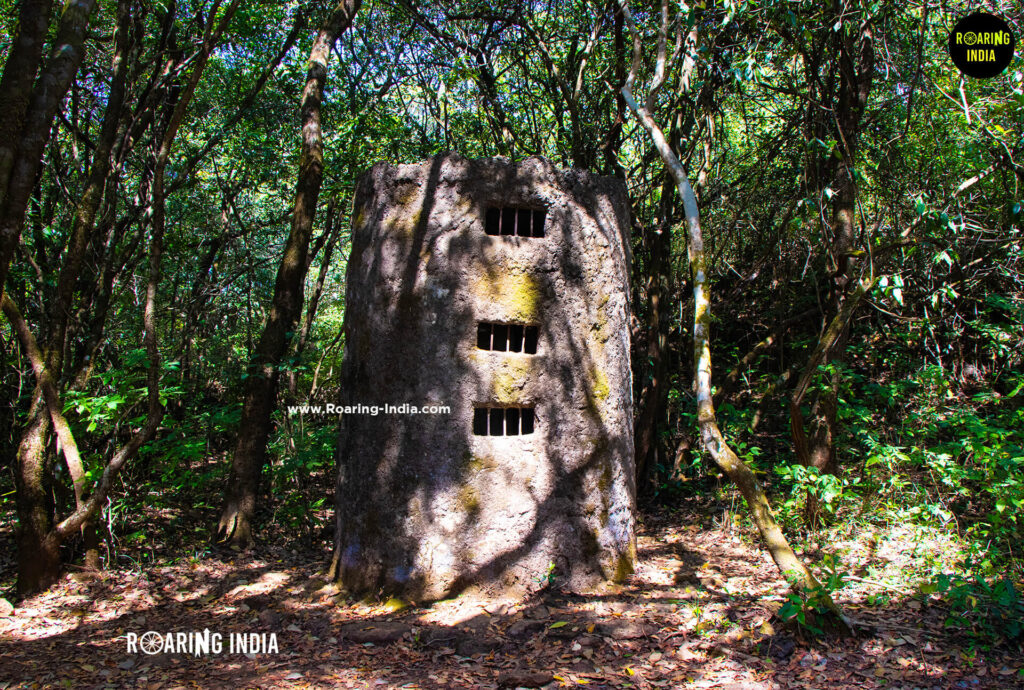

Here you can also see the footprints of some animals. Apart from this, there is also a mud bath here. Animals take mud baths here to protect themselves from germs and to balance body heat.
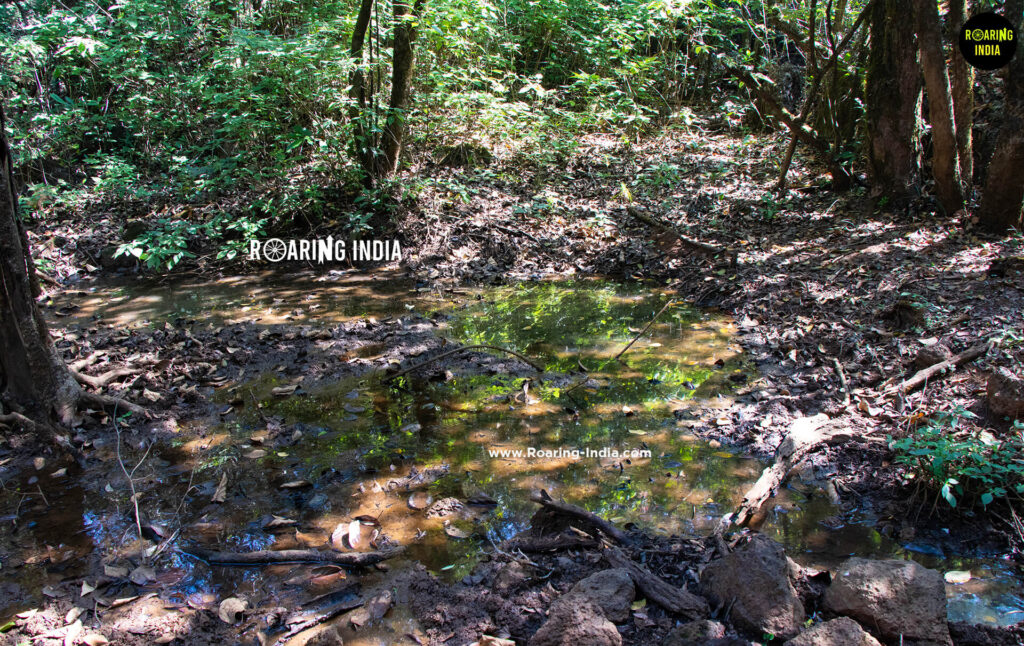
12) Remains of Zolambi Village: Earlier there was a small village named Zolambi in this forest. It was shifted to another safe place in 1990. Some remains of that village are still left here like the Building of the Marathi School of Zolambi Village, Forest Check Post, and the Vitalai temple.
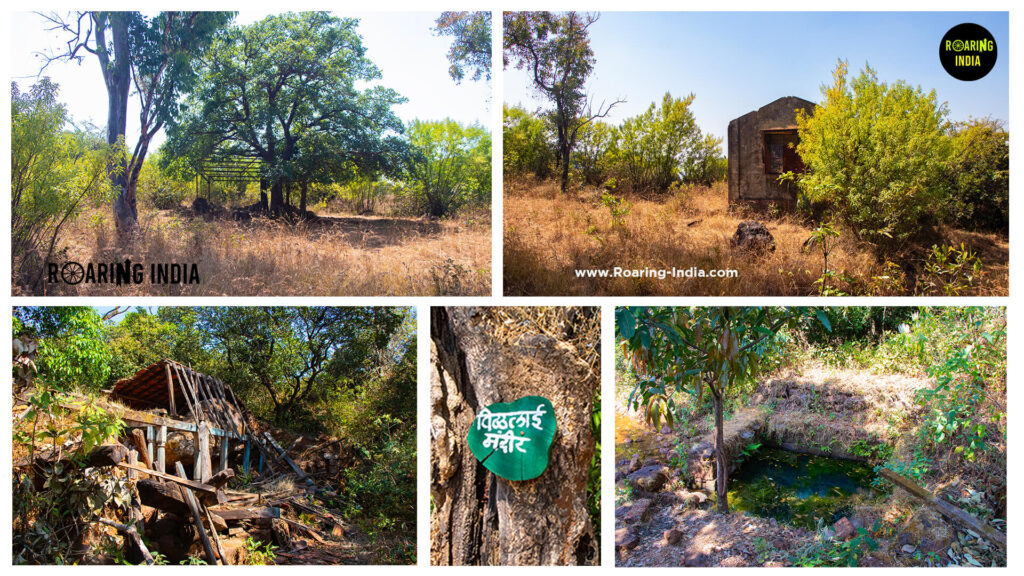
13) Vitalai Temple: In Zolambi Village you will see the Vitalai temple. This temple is now destroyed. Only a few remains remain. There was a Vitalai temple under this big rock. Vitalai was the village goddess of Zolambi. There is also a natural water resource next to this temple. The people of Zolambi village used this water for farming, drinking, and washing clothes. There is also a mud bath next to it. The chances of animals coming here to drink water are very high.

14) Zolambi Sada (Zolambi Platue): This is the Topmost Peak of the Chandoli National Park Forest area. This is the last place of your jungle safari. There is one wide Plateau on the topmost peak of Chandoli forest. We call this Zolambi Sada or Zolambi Plateau. To reach here you have to walk 2.5 KM in the dense forest through the risky hill paths. This journey is a bit dangerous. But don’t worry, your forest guides will take care of everything.
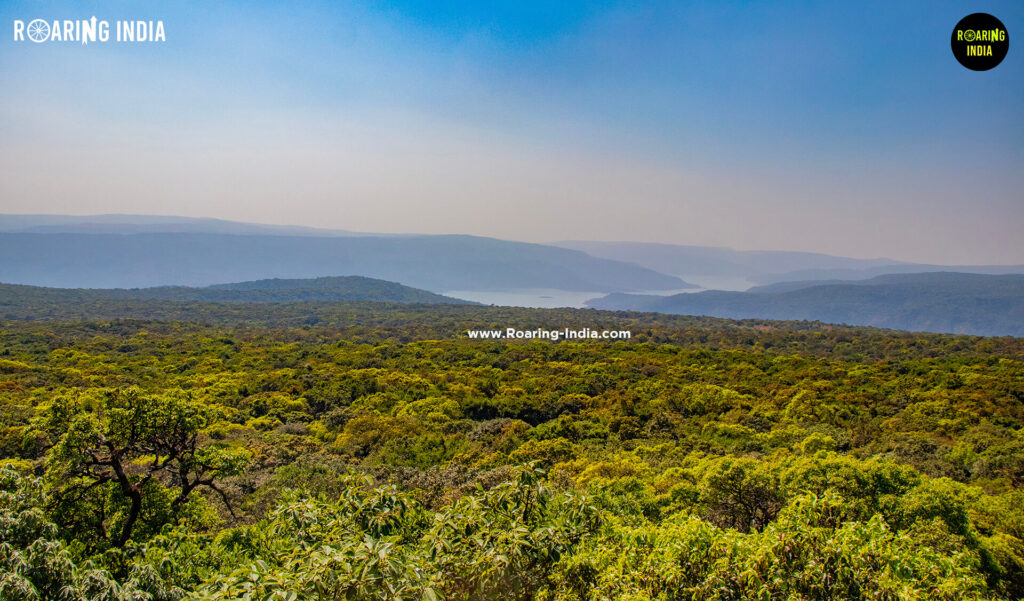
Midway you will get to see some naturally formed big Laterite stone caves. There are chances of big wild animals like tigers and leopards living inside these caves. This is the natural habitat of wild animals. This place is the last hope for you to see the animals in your jungle safari.
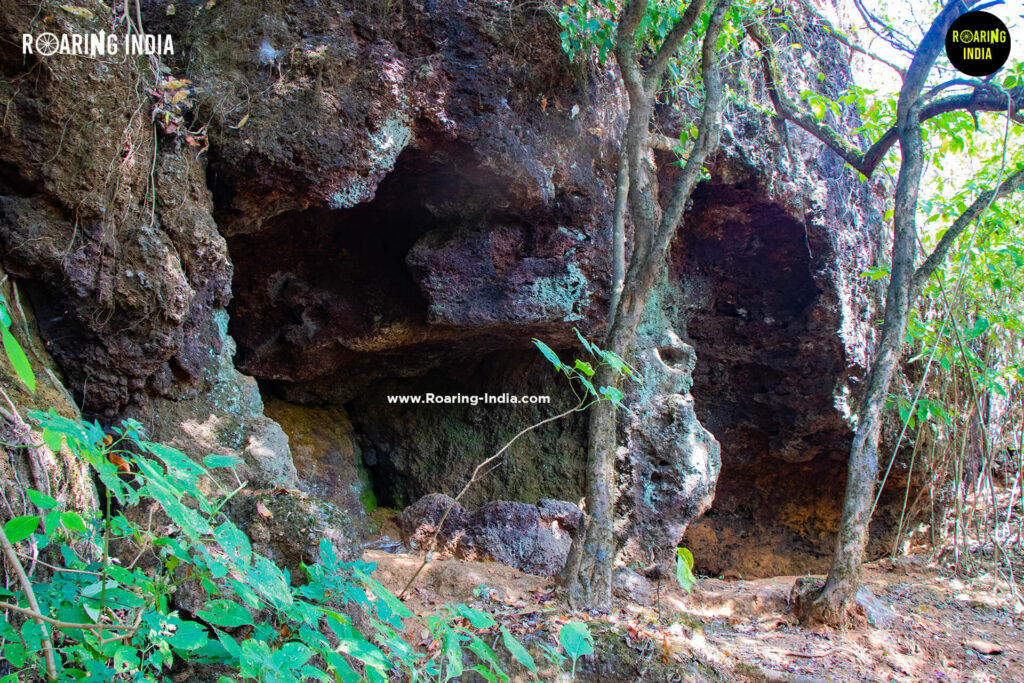
After reaching the top of Zolambi Sada you will feel like a king of the world. Because now you are on the topmost peak of Chandoli forest. This is a huge and empty space. From here you get an amazing view of Janicha Amba, the backwater of Chandoli Dam, and the dense forest of Chandoli. The wind blows very fast here.

Due to rain, strong wind, and soil erosion, Zolambi Sada is melting every year. This plateau made of laterite stones is getting eroded like this. Due to this, a huge ditch has been formed on one side. Be careful when you reach and please follow the instructions of your guides sincerely.
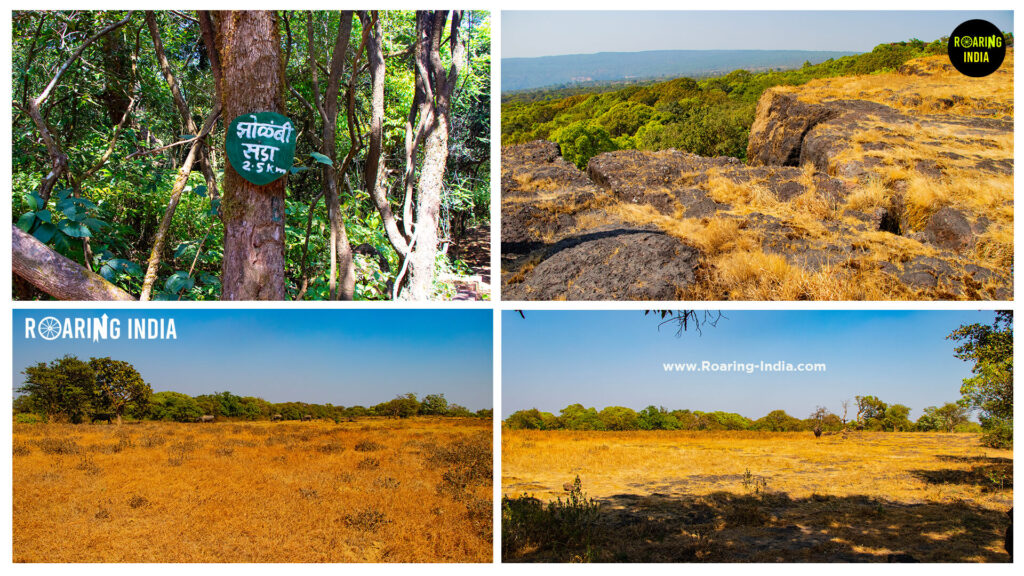
Images of Chandoli National Park, Maharashtra
How to Reach the Chandoli National Park, Maharashtra
Chandoli National Park is located at the junction of 4 districts of Maharashtra state, Sangli, Satara, Kolhapur, and Ratnagiri. If you want to do a jungle safari in this national park then you will have to come to the Mandur village of Shirala taluk of Sangli district. From here you will get to the entry gate of Chandoli National Park. This place is at a distance of 98 KM from District Headquarters Sangli and 78 KM from Kolhapur City. A lot of buses are there to visit Mandur village from Shirala, Sangli, Kolhapur, and Satara City. Kolhapur is the nearest railway station and airport to Chandoli National Park. Follow the below map to visit the Chandoli National Park by road.
Google Map Link – Google Map/Chandoli_National_Park
Travel Film of the Chandoli National Park
Nearest Tourist Places to Chandoli National Park
1) Chandoli Dam / Warana Dam – 01 KM
2) Warana River Bridge – 01 KM
3) Gudhe-Panchgani Pathar – 23 KM (Forest Road) & 32 KM ( State High Way)
Safety Rating
Travel News on the Chandoli National Park
Travel Vlog on Chandoli National Park
Best Time to Visit Chandoli National Park, Maharashtra
Chandoli National Park is closed for tourist visits during the rainy season (From June to October month due to the heavy rainfall). So November to February month is the best time to visit the Chandoli National Park. It is open to tourist visits from morning 6 AM to Evening 4 PM on all days except Thursday. Try to go as early in the morning so that you will see more animals easily.
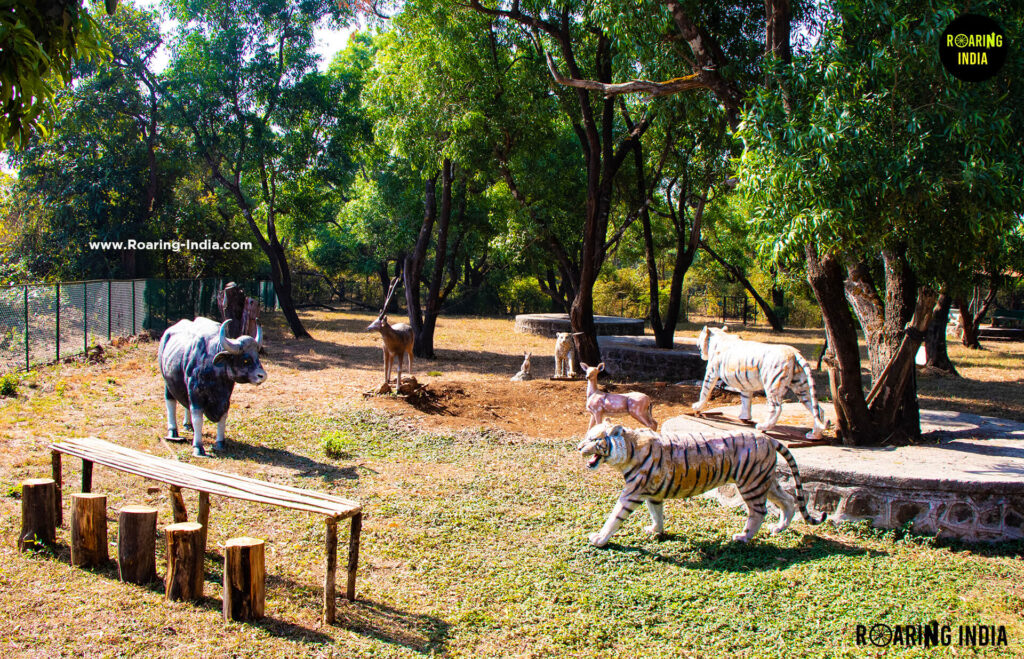
This place is underdeveloped from a tourism perspective. Basic tourism infrastructure like drinking water, toilets, and washrooms need to be provided to attract more tourists. Safety defensive tools like Nonharmful guns, Electric Sticks & safe homes to live in should be given to Forest guards and tourist guides. This is the humble request from the people of Sangli and Kolhapur to respective officers and governments.
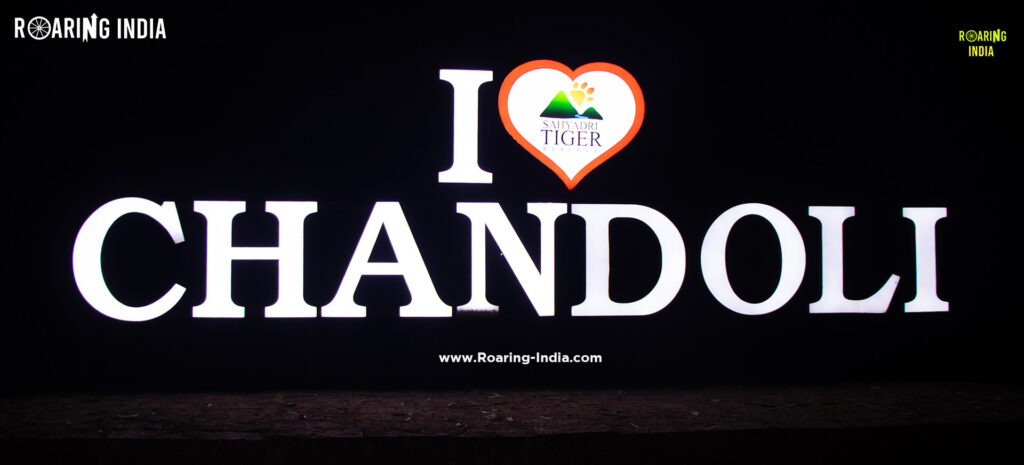
Copyright and Trademark Warning
Complete Rights of all Images, Videos, Films, and Articles published on www.Roaring-India.com are fully Reserved by Roaring Creations Private Limited and Roaring India Project (Satishkumar, Shrikant, and Mayashree). All Commercial Rights of our content are registered and protected under Indian Copyright and Trademark Laws. Re-publishing our content on Google or any other social media site is a copyright and Trademark violation crime. If such copycats are found to us, then we legally punish them badly without showing any mercy and we also recover happened loss by such copycats only. The minimum amount of fines will be more than 10 crores.

Earn More By Learning Creative Skills



















